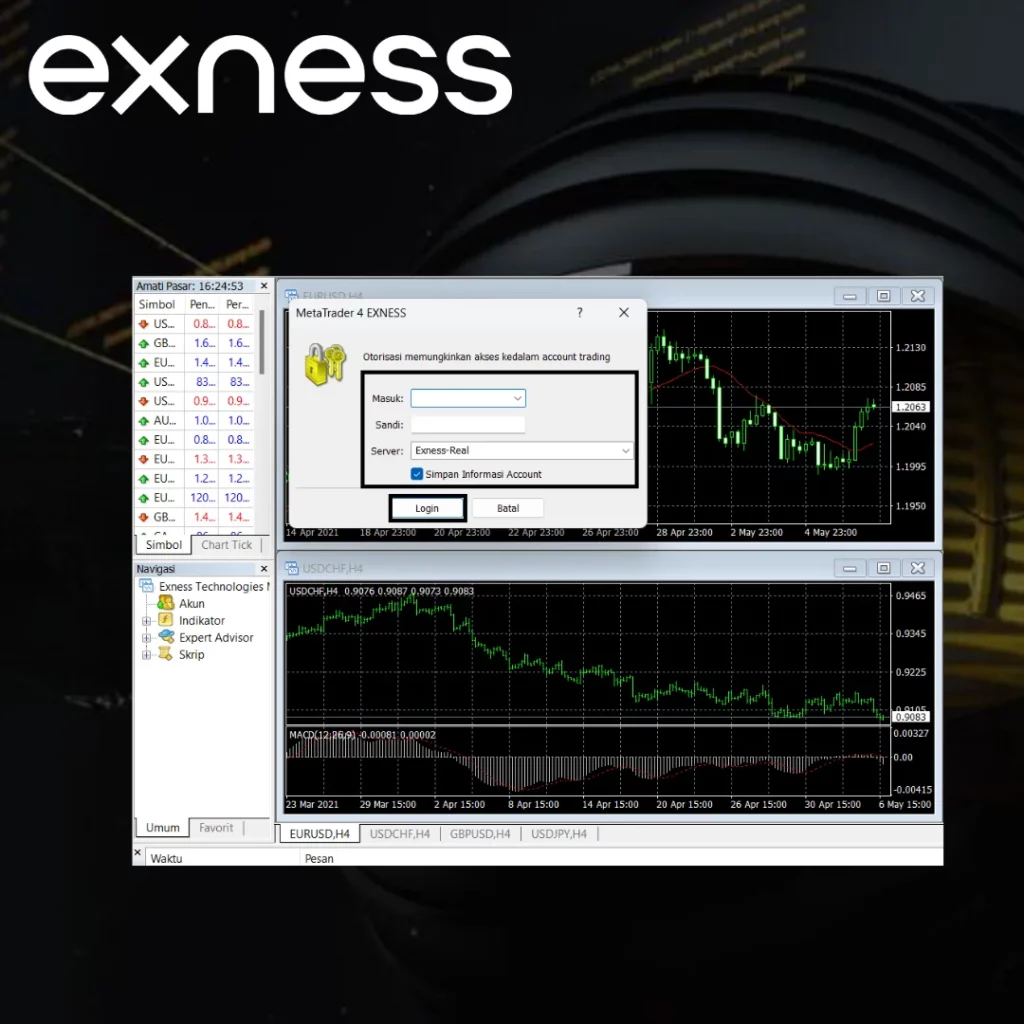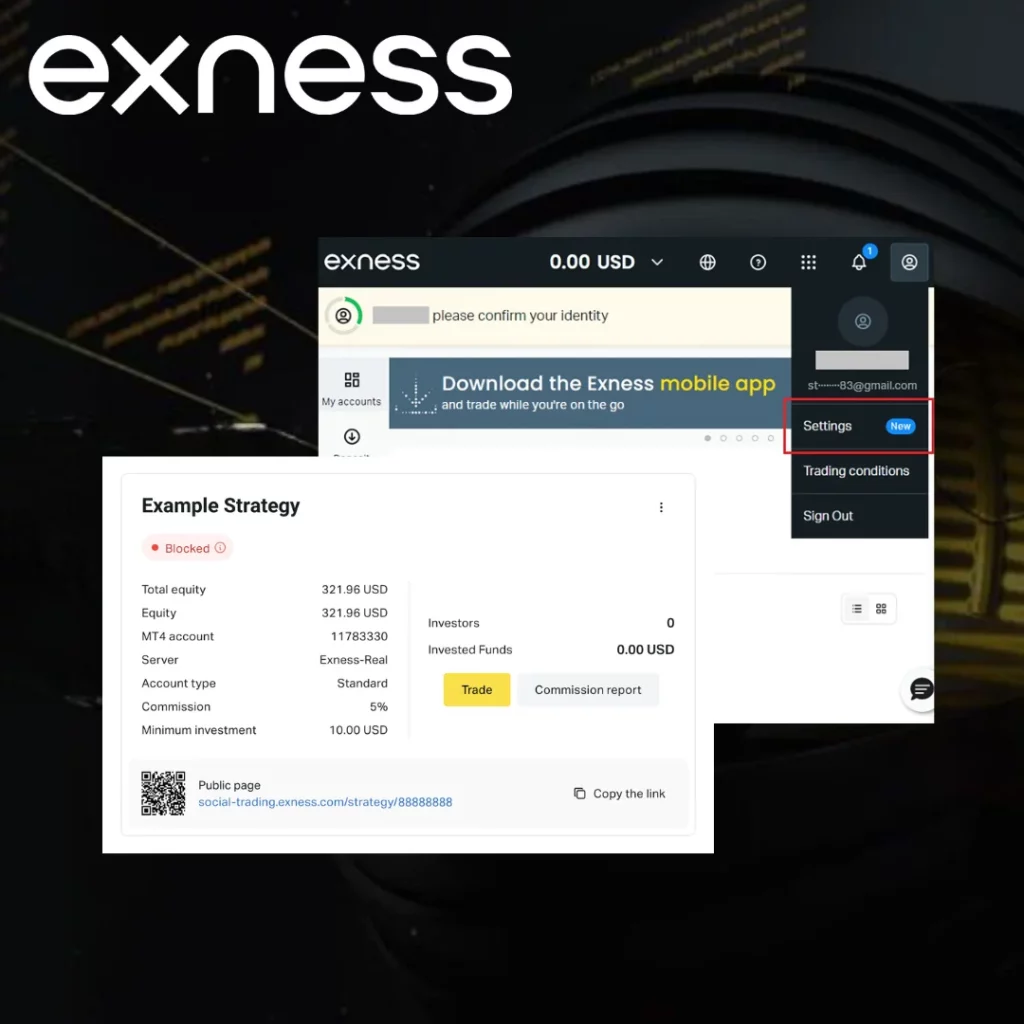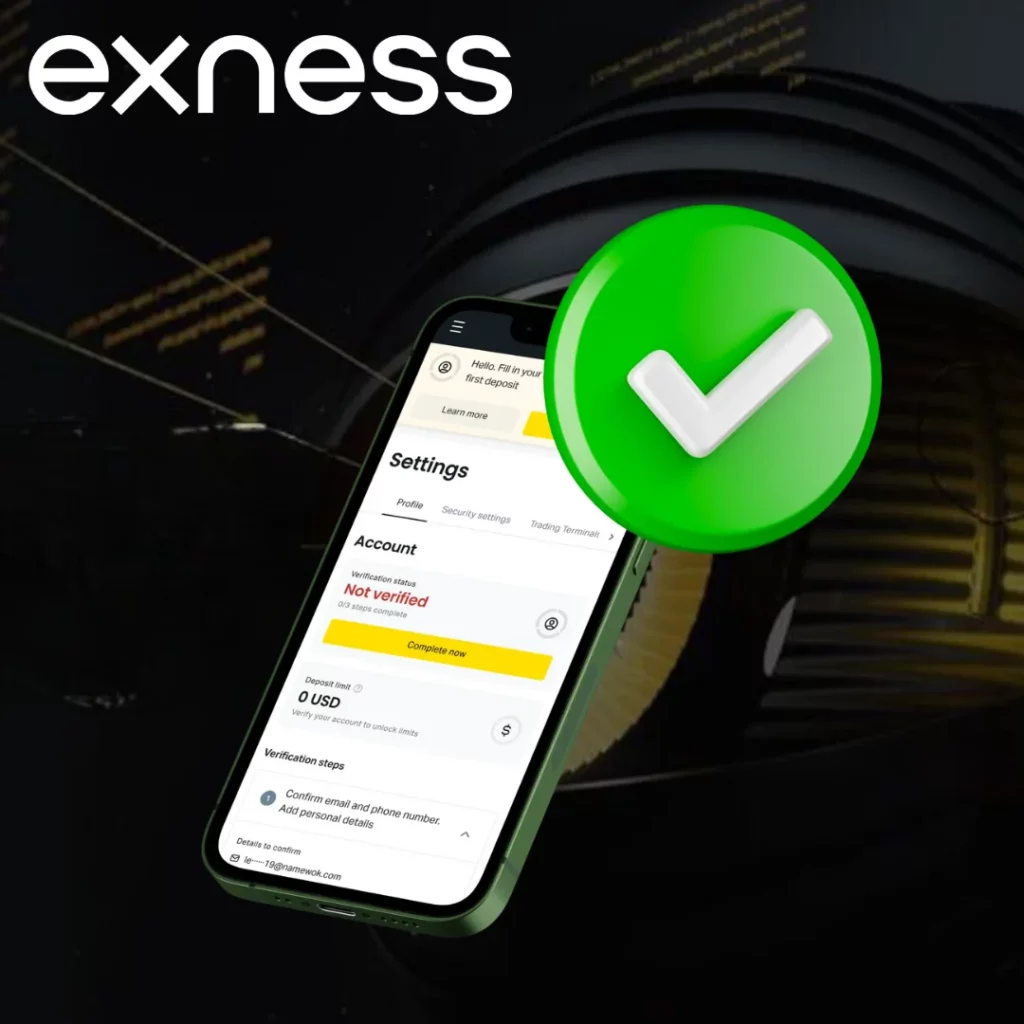Accessing the Exness Personal Area
The Personal Area is the central hub where users manage account settings, perform deposits or withdrawals, and monitor trading activity. This area is accessible through three primary methods: web browser, mobile application, and trading terminals. Each method has distinct authentication steps, depending on device, region, and account type.
Web Browser Login
Approximately 65% of all logins to Exness occur through desktop browsers, making it the most used method. To login:
- Go to the official domain, not a third party.
- In the top right corner, click “Sign In.”
- Type in the email address you used to sign up.
- Please enter the password for the account.
- If you have two-factor authentication turned on, finish the process.
After 30 minutes of inactivity, the session closes, which means that no one can come in without permission. Chrome, Firefox, and Edge all work well together, but earlier versions could have trouble with redirection. According to internal data, it takes an average of 12.3 seconds to log in on a computer.
You might get alerts if IP addresses from different places don’t match. Don’t use public Wi-Fi and keep your browser settings up to date to decrease your risk.
Exness Mobile App Login
The mobile app, which works on both iOS and Android, had more than 2 million unique sessions in the first three months of 2025. The procedures to log in are the same as in the browser version, although they work better on smaller screens:
- Tap the app icon to open.
- Choose “Login with Email” or use biometric options like Face ID or Fingerprint, available on 78% of supported smartphones.
- Input credentials and authorize.
The app supports real-time price tracking, internal transfers, and push notifications for market alerts. Automatic logout can be disabled, but doing so increases exposure on lost or shared devices. Enabling biometric access shortens average login time to 4.6 seconds.
Some users experience temporary freezing on older OS versions. Keeping the app updated reduces this risk.
MT4/MT5 Terminal Login
Professional traders often connect through MetaTrader 4 or MetaTrader 5, where credentials differ from the Personal Area. This causes confusion for 1 in 4 new users.
Steps to login:
- Launch the MT4 or MT5 terminal.
- Click on “File” → “Login to Trade Account.”
- Enter the trading account number, trader password, and choose the correct server (e.g., “Exness-Real5”).
- Click OK to connect.
Important figures:
- MT4 is still preferred by 55% of users due to lighter system requirements.
- MT5 offers more tools and supports 64-bit architecture.
- Login issues are often caused by choosing the wrong server from the list.
The trader password is not the same as the Personal Area password. Resetting one does not affect the other.
Exness Login Problems & Solutions
Login interruptions can stem from several common triggers: password mismatches, account status changes, or issues with security protocols. Identifying the cause early can significantly reduce downtime and restore account access efficiently.
“Invalid Password” Error
This error appears in roughly 22% of failed login cases. Most often, it’s due to using the Personal Area password on MetaTrader or entering incorrect characters due to autofill glitches.
Checklist to resolve:
- Make sure you’re entering the right password for the platform you’re using.
- Turn off autofill in your browser and type it in again.
- To reset your password, click the “Forgot Password” link on the login screen. A link to reset the password is sent to the email address on file and is good for 60 minutes.
- Don’t copy spaces or symbols from password managers that could be misread.
In some situations, language settings or keyboard layout switches (such as between English and Arabic or Russian) cause incorrect password entries. Adjusting to the default English input reduces these errors by over 40%.


Account Blocked or Restricted
Blocked accounts make up approximately 2.6% of total user inquiries. Common causes include:
- Multiple failed login attempts from different IP addresses within a short time window (triggering automatic protection).
- Regulatory compliance issues such as incomplete identity verification (especially in jurisdictions with strict KYC protocols).
- Dormant accounts with no login activity for more than 180 days, especially if the account had no balance or trading history.
In these cases:
- There are limits on who can go to the Personal Area.
- An email is delivered with steps to follow to prove who you are or show that you own something.
- It normally takes 24 to 72 hours to restore an account, depending on how quickly you respond and how clear the verification documents are.
Always complete ID and address verification to avoid future restrictions, especially in high-risk regions like Nigeria, Pakistan, or the UAE.
Two-Factor Authentication Issues
2FA, enabled by over 70% of active traders, significantly improves account security but also increases the chance of login complications if not managed properly.
Common issues:
- Lost access to the authenticator app (e.g., after a factory reset).
- Time mismatch between the phone and server, which causes codes to be rejected.
- Multiple 2FA devices leading to conflicting token generations.
Solutions:
- Sync device time with network-provided time.
- Reinstall Google Authenticator or Authy and restore backup using the original recovery key.
- Contact the Exness security team if the backup is missing. Verification will involve matching documents submitted during registration.
Failure to resolve 2FA lockouts within 7 days may lead to permanent account recovery procedures, requiring manual verification through ID and selfie confirmation.

Quick Login for UAE Traders
Exness has made the login process in the United Arab Emirates work better with the region’s infrastructure, rules, and device usage trends. In the second quarter of 2025, the platform saw more than 150,000 logins per month from IP addresses in the UAE. Getting into accounts as quickly as possible is a top priority in the region because the local trading community is increasing quickly, notably in Abu Dhabi and Dubai.
Key features for UAE-based access:
- Arabic language support is enabled by default for users registering with a UAE phone number or local IP address.
- Login servers are routed through low-latency nodes in the Middle East, reducing average connection time to under 6.7 seconds.
- SMS verification codes for 2FA are prioritized on Etisalat and Du networks, with delivery success rates exceeding 98.4%.
- Compliance with DFSA guidelines requires automatic logout after 15 minutes of inactivity for verified business accounts.
To enable faster login:
- Use the official mobile app, which synchronizes faster with local servers.
- For one-tap access, turn on biometric authentication, which 62% of UAE mobile users utilize.
- Do not use hotel or public Wi-Fi since these networks may send traffic through filters that slow down or stop session handshakes.
A table below summarizes login differences across platforms for UAE users:
| Login Method | Avg. Login Time (UAE) | Biometric Available | Arabic Language Support |
| Web Browser | 8.2 seconds | No | Yes |
| Mobile App (iOS/Android) | 5.9 seconds | Yes | Yes |
| MT4/MT5 Terminal | 7.4 seconds | No | No |
Anti-fraud measures in the area may temporarily stop or slow down login attempts over VPNs or proxy connections.
The UAE-specific system upgrades help make the system safe and easy to use for more and more people who trade during the Gulf Standard Time (GMT+4) market overlap with Europe and Asia.
Tips for a Secure Exness Login Experience
Since 2025, cyberattacks on bank accounts have gone up by 18%. Phishing and credential stuffing are the two most prevalent ways to do this. Exness needs to make its login procedure safer so that people can’t get into their accounts without permission, steal their identity, or lose money. More than 11% of hacked accounts had weak passwords or didn’t have two-factor authentication switched on, according to information from the whole platform.
Real things you can do to make access safer:
- Use strong passwords: Passwords should be at least 12 characters long and have numbers, both uppercase and lowercase letters, and at least one symbol. Don’t use names, birthdays, or other combinations that you’ve already used on other sites.
- Turn on Two-Factor Authentication (2FA): This makes things even safer and cuts the chance of a breach by more than 72%. Use programs like Google Authenticator or Authy instead than just SMS, which anyone may read.
- Stay away from public networks and gadgets that aren’t safe: More than 9% of breaches linked to access came from systems that were shared or public. Only check in from your own devices and safe Wi-Fi networks when you make big deals or send money.
- If you’re using a shared or mobile device, make sure to log out after each session. The platform automatically logs out sessions that aren’t being utilized, but you can do it yourself to have additional control.
- Check out the activity on the login page: Users can see the times and IP addresses of their most recent logins in the Personal Area. You should tell someone straight away if you see someone trying to get into that account that you don’t know. Users will get automatic email alerts when they log in from a different device or location starting in April 2025.
- Make sure your software is up to date: The mobile app and the web version both get security updates on a regular basis. Six security holes in older versions of mobile apps were fixed in the first three months of 2025. Using the most recent version makes it less likely that hackers will get in.
Here’s a quick comparison of recommended settings for maximum account safety:
| Security Feature | Effectiveness (%) | Recommended Frequency |
| Strong Password | 45–50% | Update every 90 days |
| Two-Factor Authentication | 70–75% | Always enabled |
| Login History Monitoring | 20–25% | Weekly review |
| Biometric Access (App) | 60–65% | Enable on trusted devices |
If you use at least three of the precautions listed above, the likelihood of someone getting into your account without your consent drops by more than 80%. People with a lot of money or a lot of trading accounts should keep their backup codes offline and use separate passwords for each account.
Frequently Asked Questions
How to Login to Exness from Multiple Devices?
Traders frequently need to check their Exness accounts on a number of devices, like smartphones, tablets, laptops, and desktops. This helps them keep an eye on the markets or make trades while they are on the go. The software lets you log in from more than one device at the same time. 95% of customers say they have no trouble gaining in when they use the right credentials.

